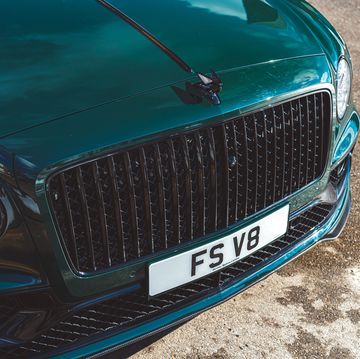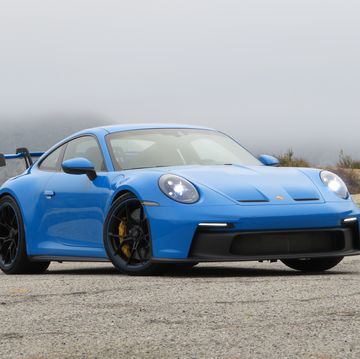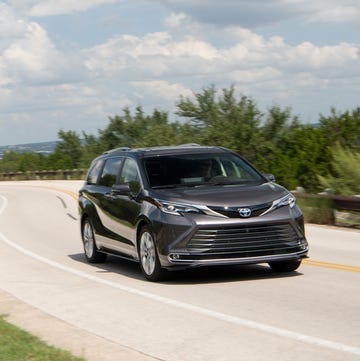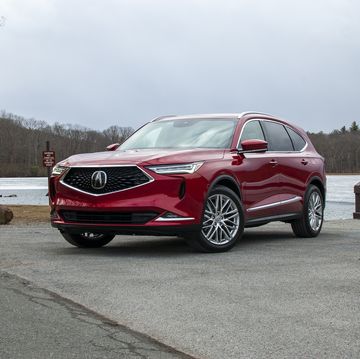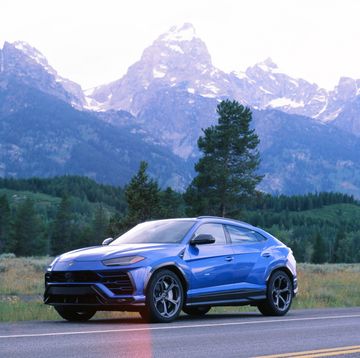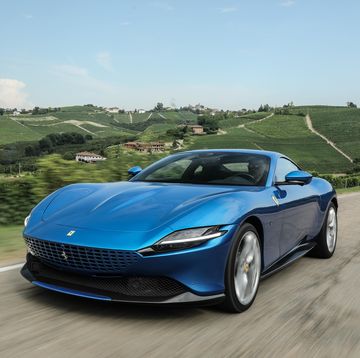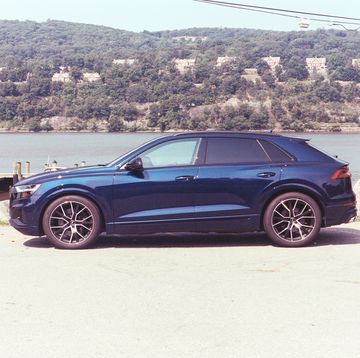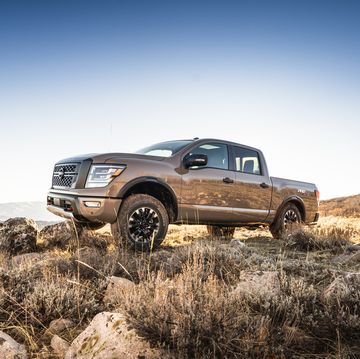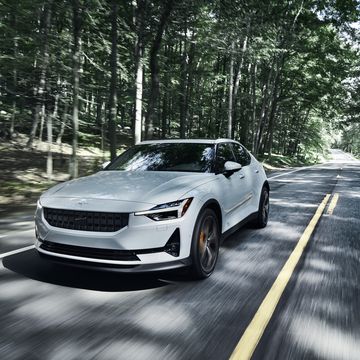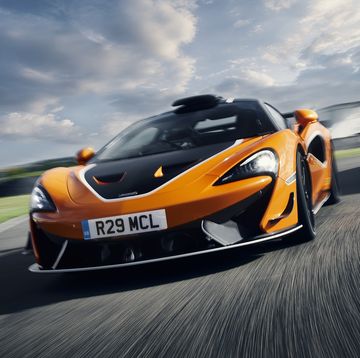There are no vanity projects at Aston Martin. After taking charge of a company that managed to fight its way through seven bankruptcies in one century, Andy Palmer announced seven new cars in seven years. Such pace was unheard of before at Gaydon, making those excited by the change volunteer for double shifts in order to achieve profitability and match Ferrari's performance. Oh, and for the overall glory of Britain, no doubt.
New platform, new V12, new V8, new partnership with Daimler and Red Bull Racing, new attitude, new Aston Martins. The schedule was so tight that in 2015, the DB11 was finalized long before Matt Becker could get over there from Lotus. As a result, the later V8 version handled better, making Aston replace the V12 with the much improved AMR in a heartbeat for 2018.
What's important for Aston Martin now is that out of those seven cars, the core trio is done. The DB11, Vantage and DBS Superleggera are out. Coming next is the mid-engined car, which is rumored to use the Vanquish name, the wild Valkyrie hypercar, the DBX SUV, and the brand's first production EV, a futuristic Lagonda sedan based on what the companys learns with the 155 Williams-powered prototypes built on the Rapide AMR chassis.
To keep our eyes peeled, Aston Martin will probably continue its cooperation with Zagato, while also building a pair of one-offs each year for its black book customers. Some of which we'll never see. What we should see plenty of, however is the new DBS Superleggera. Complete with its stunning, yet functional lines perfected by Marek Reichman, its historic badge licensed from Touring, and its twin-turbo V12 packing 715 horsepower.
With the DB11 AMR being as good at a super fast GT can be, one may be wondering why Aston is going for bigger fish. After all, the DBS Superleggera shares a number of its components with the DB11, including doors, greenhouse, and 5.2 V12. In fact, when it comes to the engine, the only modification they've done is dial up the boost by 2.9 psi, in order to get 85 extra horses over the DB11. It really was that simple.
With this move, Aston Martin has reached the limits of the stock engine hardware, but needed to use a new, high-torque version of ZF's eight-speed gearbox to handle the peak of 663 lb. ft. available between 1800 and 5000rpm. As far as the gearing goes, the DBS gets shorter ratios with the final drive of the Vantage at 2.93:1. Zero to sixty-two? 3.4 seconds. In gear acceleration? Ferrari 812-beating, apparently. And Aston Martin needed no more than that.
If the DB11 AMR was built to eat Bentley Continentals for breakfast, the DBS Superleggera was put on this Earth to give the Superfast a run for its money. While the 812 might offer a lot more theater, Aston Martin knows that torque beats horsepower day after day, and with all the performance one could ever need on tap, a hand-made, comfortable interior makes for a better long-term relationship than a screaming naturally-aspirated V12. Even one sound-engineered by Ferrari's crew.
From a chassis standpoint, the DBS Superleggera uses the more aggressive front end setup of the smaller Vantage, but with the isolated rear subframe of the DB11. That means there are rubber bushings between the chassis and the frame, which allow for just enough movement to put the DBS dynamically between the Vantage and the DB11 AMR. Compared to that GT, the person in charge of that balance, Matt Becker summed it up as being "on a whole new level."
Although it remains close to irrelevant how a road car behaves at 211 miles per hour, the DBS steps up the game in the aero department with features that work well below 211. There's clever cooling for the massive carbon ceramic brakes, more heat getting sucked out from under that huge carbon fiber clamshell, and side louvers that get the high-pressure air out of the wheel wells. At the rear, the twice as wide, fixed carbon Aeroblade works with the diffuser, for a total of 397 lbs. of downforce at 211mph, in case you'd care to measure.
What's for sure is that no matter how hard you push, the DBS Superleggera stays planted. Through those 21-inch forged wheels wrapped in P Zeros, the front axle feels glued to the road, and the rear wasn't tuned to go haywire in a thick cloud of smoke either. Of course with the traction control off, the back will step out eventually, but with the torque control and vectoring systems both hard at work, the car stays predictable, and as quick out of the corners as no 3732+ lb. object should be.
Dry weight, that is, with options such as the titanium mufflers and a lithium-ion battery. The carbon fiber body panels come standard, almost justifying the Superleggera badge.
McLaren is currently the only manufacturer in this class loyal to hydraulic steering. However, the DBS Superleggera's variable-ratio electric rack does a decent job. You get 2.4 turns lock-to-lock, with just about enough load and feedback to stop you from tweeting about it. Overall, it might not be a dream come true, but it does allow for as much speed as you dare, and Aston Martin's excellent steering wheel design makes up for the rest.
The brakes don't fear hard labor either, and while some may miss the smooth operation of the DB11's steel rotors, at this level, carbon ceramics are expected and required. Great news if you intend to take a DBS to the track, for reasons unknown to humanity.
Just like all other new Aston Martins, this super GT offers three driving modes and settings for the adaptive damping. The latter trio only plays a role when you really start hammering your stunning 2+2. In that case, you might want all the roll reduction there is. Yet during a normal drive, the ride quality stays fine in either, proving once again that Aston Martin knows what the GT designation stands for.
The individual driving modes make a bigger entrance. In Sport, you get the pops and bangs on the overrun straight away, while the then open exhausts will be "10 dB louder" than a DB11's as you rush towards the V12's redline at 7200rpm. However, torque is limited up until third gear in both Comfort and Sport. If you wish to send all 663 pound-feet to the rear transaxle via your fancy carbon fiber propeller shaft already in third, Sport+ is your only option. Switch manually to control your revs, and you're good to go.
A slight glitch discovered on the road is that as long as you stay in Sport, the gearbox can get confused if you suddenly apply full throttle. Basically, it can drop down to second, change its mind for third, then go down again to second to make sure you have enough juice under your right foot. The result is a jerky rollercoaster ride at best, but Aston Martin assured us that they'll teach their ZF unit about how much torque there really is before the DBS hits the streets. Pre-production feedback, done.
When you jump inside the cabin, it becomes instantly clear why Aston Martin puts 200 hours into building a car. There is hand-stitched Scottish leather, metal and carbon fiber everywhere, and all the luxury surrounds an infotainment system that works, thanks to being Daimler's. The seats are comfortable, the necessity of the power lid on the central storage gives you enough to think about, and while the hood doesn't look as muscular from the cockpit as you might expect, the rear fenders have a reassuringly wild stance though those carbon fiber mirrors. After all, they were sculpted to hide 305-wide chunks of sticky rubber.
It's no surprise that the DBS Superleggera is a missile in a straight line, but instead of being a one trick pony, it also chews through corners like a Becker-tuned car should. To enhance the experience, despite being turbocharged, the V12 disguises itself as a supercharged engine at high loads, due to its oil pump making a very distinctive whining sound. That's very entertaining, and with the ever increasing intake noise, plus all the bangs coming from the pipes once your conscience makes you lift off, the DBS tends to deliver the goods every time you're done playing nice.
Where it goes down a different path than the 812 is that it stays quiet when that seems appropriate, and it won't wear you out either, no matter how long the journey might be. Equally pleasant is that Aston Martin's in-gear torque claim is real, which makes the DBS Superleggera sufficiently mad in most of its rev-range. Floor this next to the Ferrari, and you'll see why Aston put its chips on a twin-turbo V12.
If you like math that goes beyond two turbos and twelve cylinders, I must tell you that the latest Superleggera is also cheaper than the first Superfast. Aston Martin's list price for the DBS is $304,995, and most of the Designer-spec test cars we drove were $350,401 affairs, based on their UK stickers. To compare, the Ferrari 812 Superfast's list price is $335,275, yet a test car we had recently came with an MSRP of $474,486.
That means that choosing the hands down prettier British car should allow Mr. Palmer to sign you up for all the available options, and still call it a bargain over a glass of bubbly. And having driven the DBS Superleggera on a sunny day across the Alps, that only seems fair.










